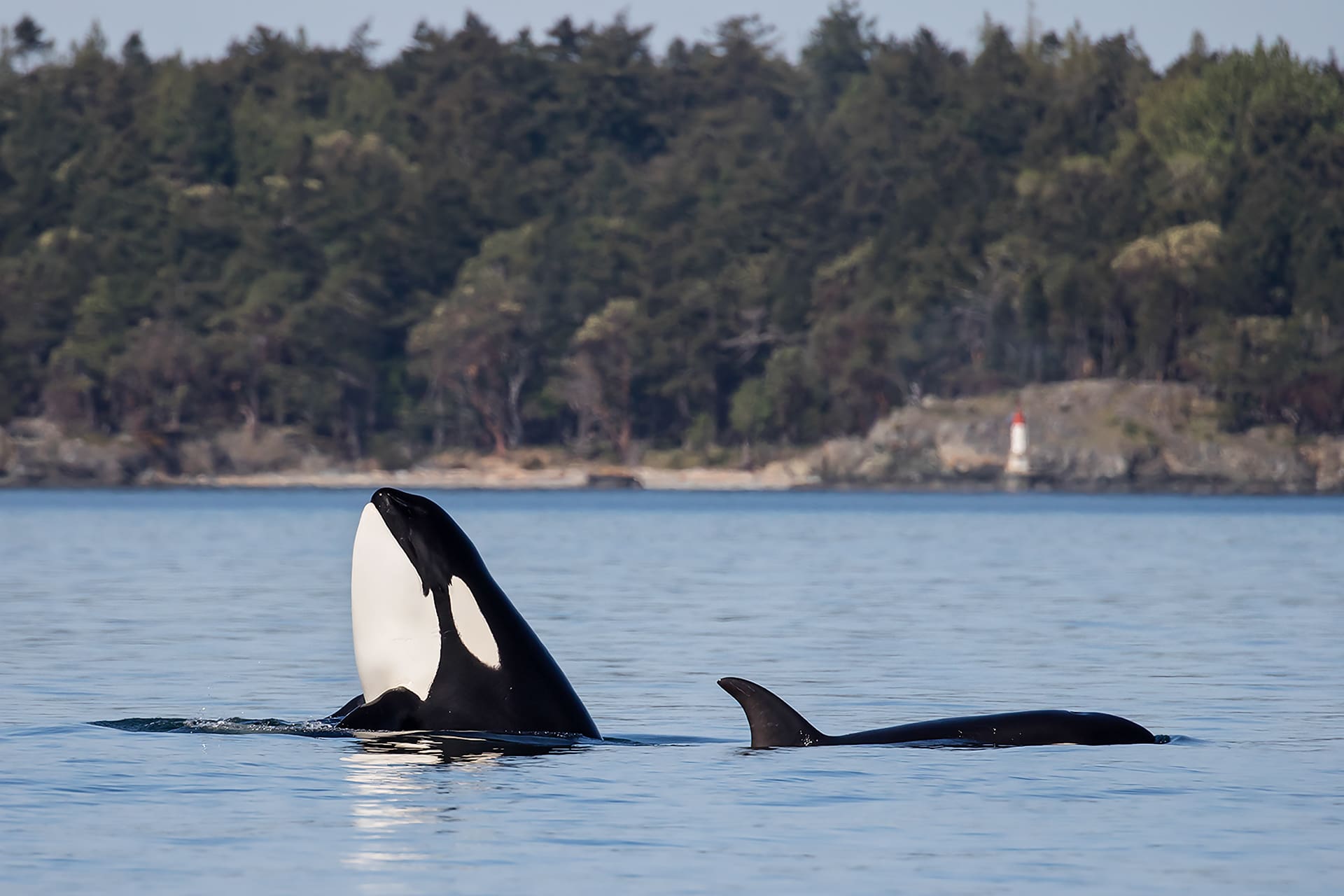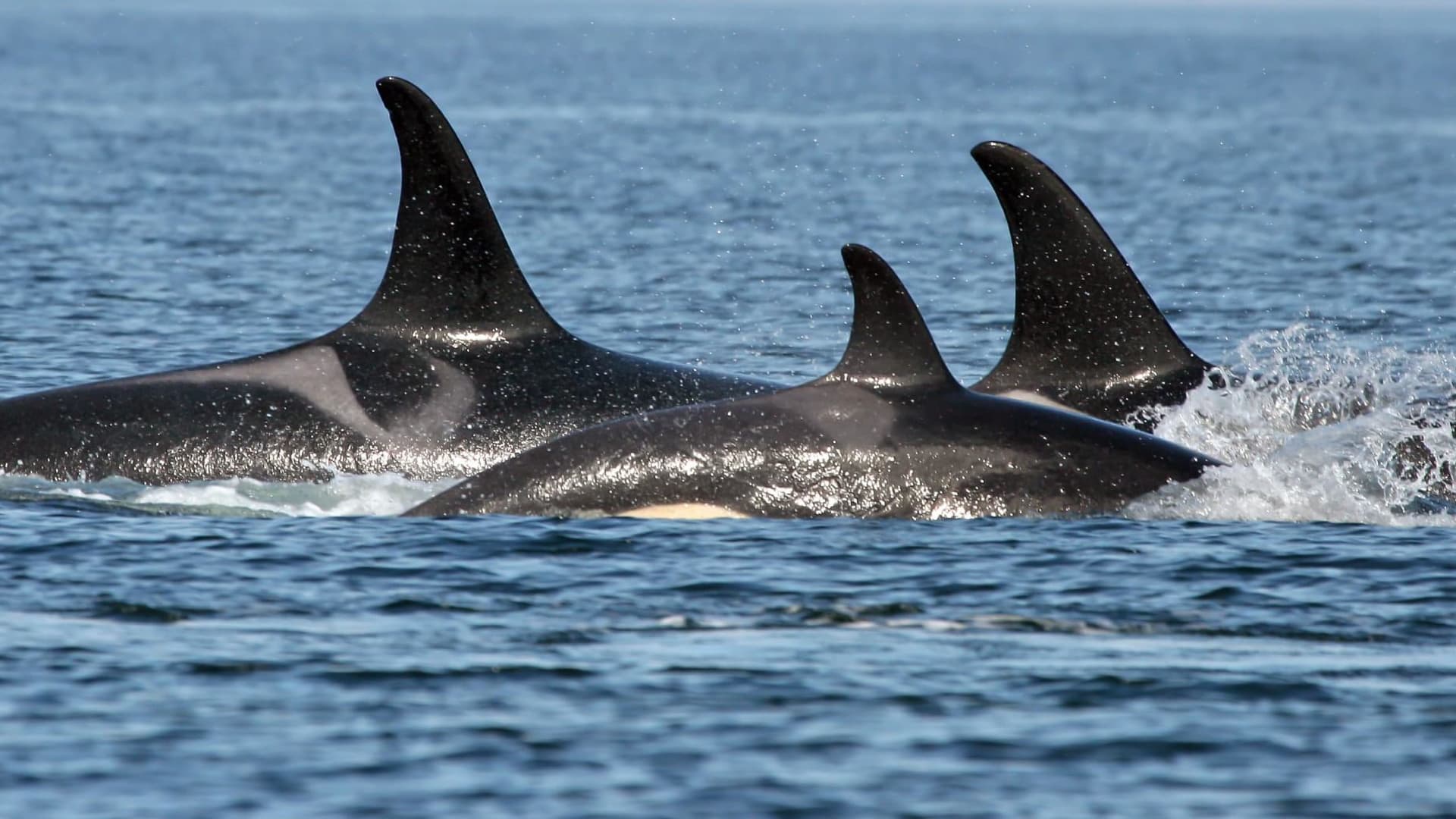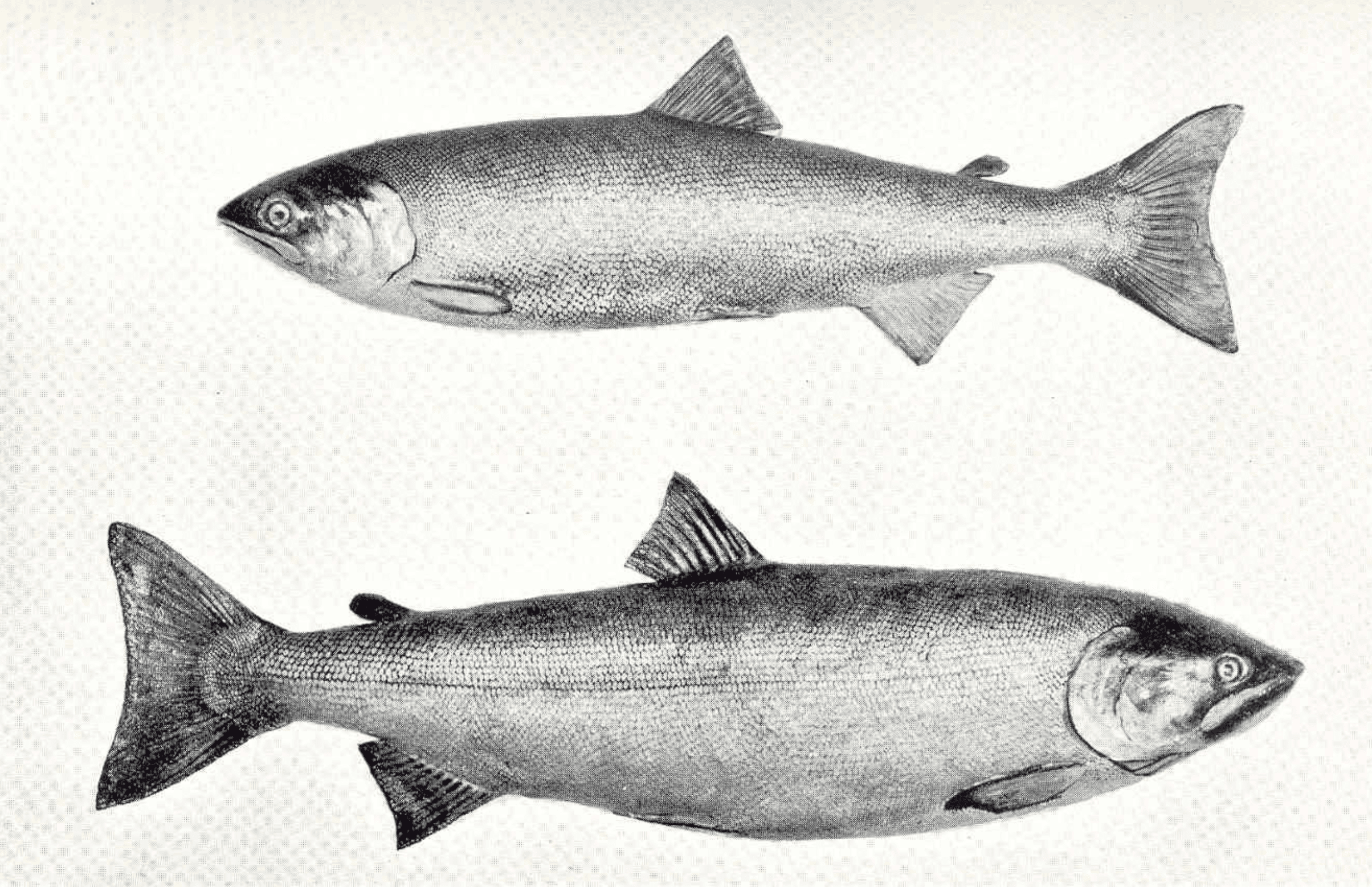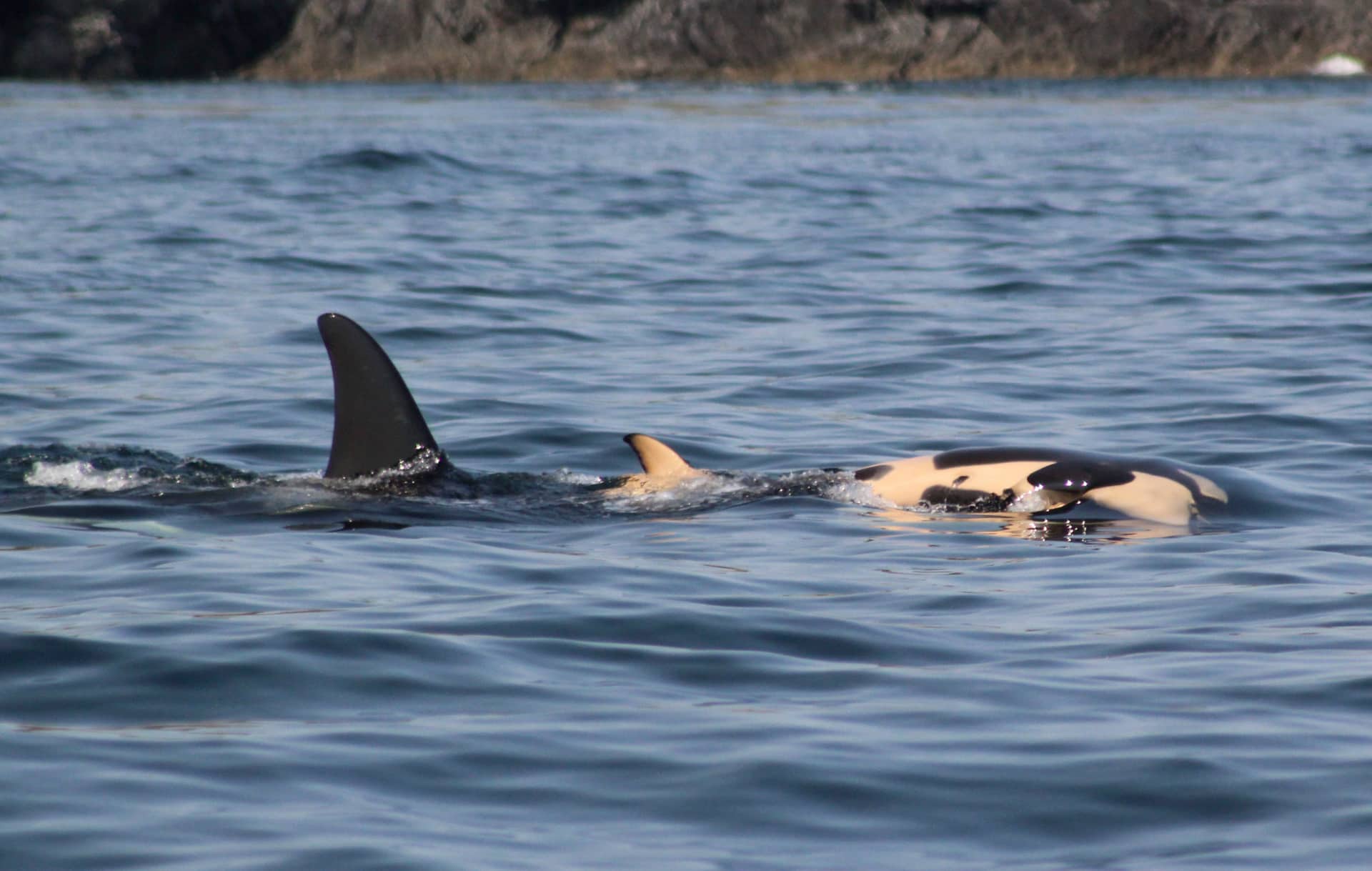
Species in the Spotlight
‘Species in the Spotlight’ is an initiative by NOAA Fisheries—the government agency responsible for all marine wildlife—that aims to target resources to save endangered species, such as the Southern Resident killer whales. Sadly, the previous 5-year plan did little to reduce their risk of extinction:
"The Southern Resident killer whale population remains small and vulnerable, and has not had a net increase in abundance since the mid-1980s”.
"The Southern Resident killer whale population remains small and vulnerable, and has not had a net increase in abundance since the mid-1980s”.
NOAA Fisheries: Species in the Spotlight, 2021
It’s been 15 years since the Southern Residents were added to the Endangered Species list, yet they still struggle for survival due to:
- breeding-age whales dying in their prime,
- calves failing to survive beyond age 5,
- calves dying shortly before, or at birth,
- loss of knowledgeable, senior matriarchs, and
- a high (69%) pregnancy failure rate.
Species in the Spotlight Initiative
2021-2025
Purpose
"To provide immediate, targeted efforts to halt declines and stabilize populations."
Which Species?
"One whose extinction is almost certain in the immediate future.“
Why Southern Resident Killer Whales?
Too few births, with too many deaths!
Key Threats to Southern Resident Killer Whales
Prey
Chinook (aka King) salmon—also an endangered species—is prized by recreational & commercial fisheries.
Toxicants
Contaminant sources such as: pesticides, contaminants in the food web, sewer outfalls, wastewater treatment plants.
Noise
Sound from vessels affects whales' behavior and reduces their ability to successfully find and capture prey.
Priority Action 1
Protect Killer Whales from Harmful Vessel Impacts through Enforcement, Education, & Evaluation.
Vessel Action Plan:
- Increase acoustic monitoring in coastal waters,
- Expand programs to include larger vessels,
- Adopt the 'Quiet Sound' program, and;
- Increase use of the 'Whale Report Alert System'.
What are the Issues?
"Southern Resident killer whales rely on echolocation and communication to support their critical foraging and social needs; however, physical and acoustic disturbance from vessels can impair these functions.”
What are the Expected Benefits?
"We expect expanded enforcement and education/outreach presence on the water to further reduce vessel impacts to the whales' behavior, foraging, and communication, as well as decreasing the risk of vessel strikes, which can be fatal."
Priority Action 2
Target Conservation of Critical Prey.
Vessel Action Plan:
- Identify key prey populations critical to whales,
- Fill knowledge gaps of whales' seasonal diet,
- Better understanding of whales' habitat uses,
- Understand travels of key Chinook populations,
- Assess hatcheries value to the whales' diet, and;
- Understand diet as Chinook abundance varies.
What are the Issues?
"Current management of the population is complex in part because one of their main sources of prey, Chinook salmon, are also important to tribal, commercial, and recreational fisheries and influenced by environmental and climate change. In addition, many runs of Chinook salmon are themselves listed as threatened or endangered.”
- Species in the Spotlight, 2021
What are the Expected Benefits?
"Improved understanding of the food web is critical for us to make informed killer whale and salmon management and conservation decisions that affect the fishing industry, tribes and the overall health of the ecosystem.”
- Species in the Spotlight, 2021
Priority Action 3
Improve Our Knowledge of Southern Resident Killer Whale Health to Advance Recovery and Support Emergency Response.
Vessel Action Plan:
- Assess physical condition of individuals,
- Evaluate impacts of contaminants on health,
- Expand stranding investigations,
- Expand disease testing,
- Evaluate effects of inbreeding, and;
- Improve systems to better track health profiles.
What are the Issues?
"During times of nutritional stress, the effects of the high levels of contaminants in this top predator may also compromise the health of the whales by impairing immune function and interfering with reproduction."
- Species in the Spotlight, 2021
What are the Expected Benefits?
"We can identify patterns of health and reproductive output of breeding age females and potential causes of mortality to guide our recovery actions.”
"Additional information on direct links between contaminant levels and physiological impacts will support recovery actions to reduce contaminant inputs into Southern Resident killer whale habitat."
- Species in the Spotlight, 2021
Priority Action 4
Raise Awareness about the Recovery Needs of Southern Resident Killer Whales and Inspire Stewardship through Outreach and Education.
Vessel Action Plan:
- Create new programs, reach new audiences,
- Increase awareness of the threats to these whales,
- Inform how to contribute to conservation, and;
- Inspire personal actions to make a difference.
What are the Issues?
"Public attitudes are a major part of the success or failure of conservation efforts for endangered species."
- Species in the Spotlight, 2021
- Species in the Spotlight, 2021
What are the Expected Benefits?
"New programs, new audiences, and inspiring a variety of actions will lead to measurable benefits for the whales."
- Species in the Spotlight, 2021
Our Take
The Time to Act is Now
Ongoing research should not prevent immediate action using the best-available science.
Compelling Evidence Already Exists
Peer-reviewed studies & publications since 2009:
- NOAA Fisheries 2004–2017 Diet Study concluding Chinook is important year-round,
- 3 concurrent publications on the critical role of Chinook to whales' health & survival,
- 2 major publications citing malnutrition as the major factor in failed pregnancies,
- NOAA Fisheries acoustic study confirms high use of coastal waters near river mouths, and
- a recent review—by govt. fisheries scientists—of Chinook populations key to whales' recovery.
Unfortunate Truths or Inconvenient Facts?
The science is in. The political will is not.
- These whales rely on Chinook year-round: their fair share of the catch is a priority.
- Columbia River Chinook are essential to these whales: breaching dams is a priority.
- Hatchery salmon are a Band-Aid for a broken ecosystem: restoring habitats is a priority.
- Marine predators maintain healthy ecosystems: they're essential, not scapegoats.
- With insufficient prey, deaths rise & births fall: to save these whales we must save Chinook.
Continued below...
Allocating a share of the Chinook fishery to Southern Residents in the short term is high priority. Well-fed killer whales are less impacted by other threats in their environment: transient killer whales are increasing—despite the presence of vessels, and living in a toxic soup—because their prey (marine mammals) is abundant. Beyond this, a comprehensive program to restore Chinook is urgently needed—such as resolving issues caused by dams and culverts, to restoring estuary habitat, and reducing water pollution.
If we save wild Chinook—through habitat restoration and sound fisheries management—we can save the Southern Resident killer whales, and have a viable fishery. By reducing our reliance on hatchery-raised fish, that disturb the fragile balance of the Salish Sea, we will be building a healthier ecosystem—with natural predator-prey relationships—one that’s more resilient to the threats posed by our changing climate.
When can we start on this plan?





